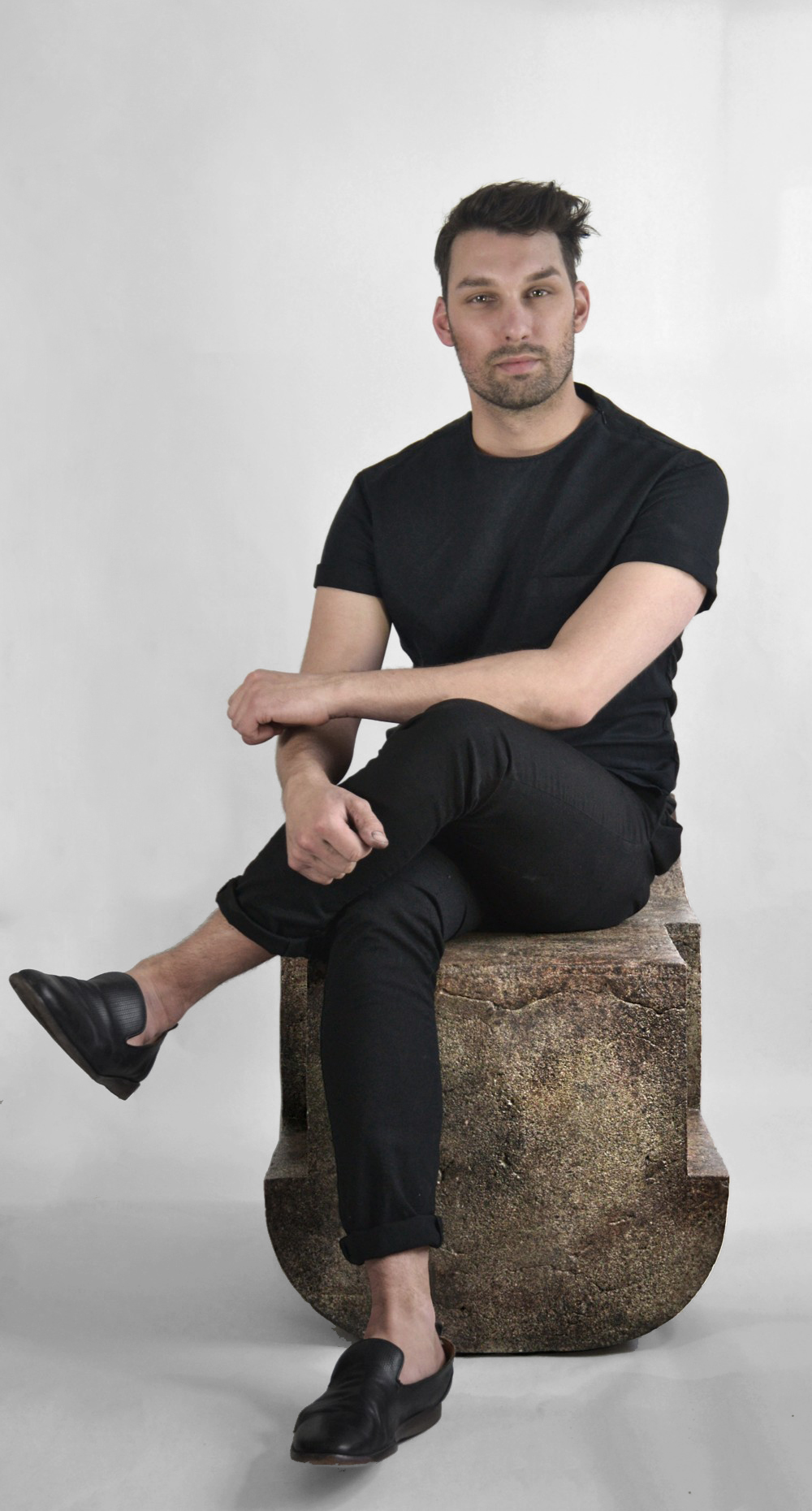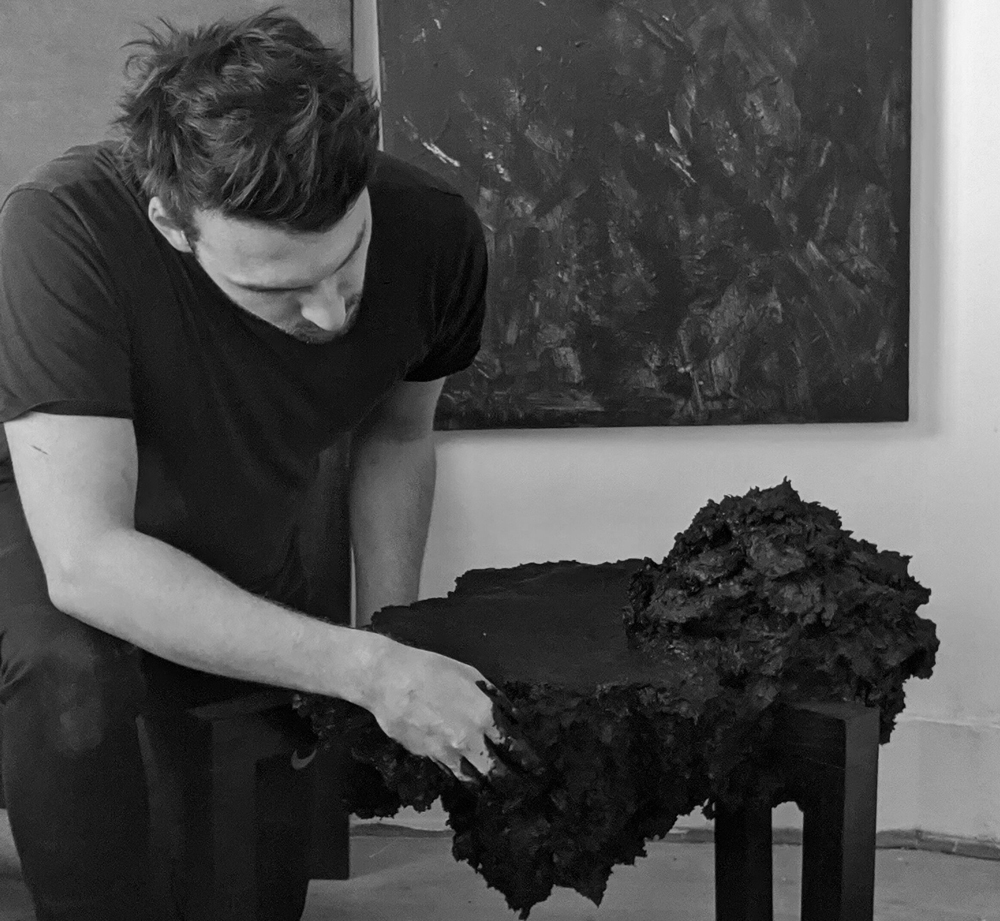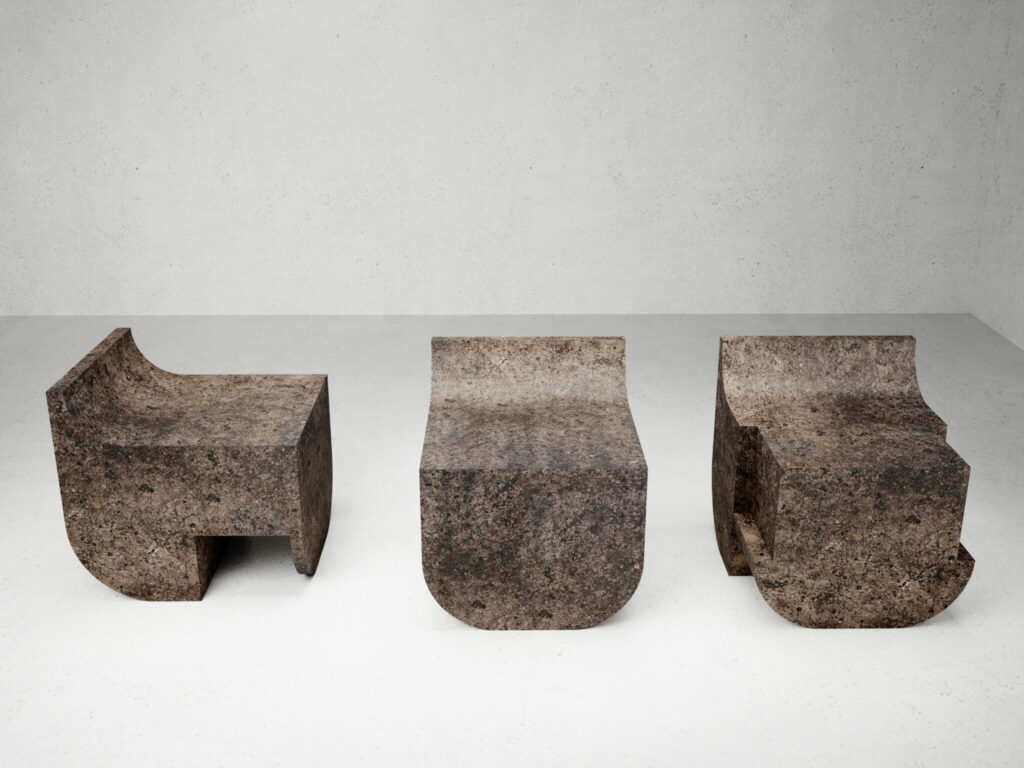
ISAC ELAM KAID
1. Where were you born and where are you from ?
I was born in Canada and grew up in the countryside, surrounded by nature.
2. What is your first memory connected to the art world ?
Growing up, I loved sculpting, and sketching. I wasn’t aware of Design as a profession, but was instinctively drawn to the textures, contrast and forms of my environment. I would make sketches of things that seemed unimportant – like the patterns of rust on an old door, or the scale of a boulder against a tree. I think I was trying to study those qualities and pull out what attracted me. I see the work I do now as a constant practice in observing those qualities, and interpreting them in objects of permanence.
3. Have you always worked in the art/design field ?
Yes. I studied Architectural Design, and worked with private and commercial clients to conceive interior spaces, before designing sculptural works.
4. What led you to the design creation ?
I think we find a way to our paths, regardless of our backgrounds, if we keep moving toward what we feel called to. Growing up, I really didn’t know that what I do now, existed. I just knew that I was attracted to an aesthetic world, and to form. I have a keen interest in Architecture, but I primarily chose my studies because it was an accessible way to live and work in creativity. When I worked with clients, I would have a very specific vision of the objects that would be in the space. The problem was, that none of those objects existed. I started creating objects for my clients, and almost immediately realized that this is what I truly wanted to do.
5. How would you describe your creative process and it influences ?
While almost everything has the ability to influence the work, there are definitely key influences in almost everything I do. My family is originally from the Mediterranean – In Greece, Israel and France. I feel a deep connection to that heritage; to sacred temples and places of worship, and to old practices of building and design. I am also constantly inspired by the natural world – to roots, to trees, patterns and decay. I think a lot of my work is an attempt to capture what I feel and see. I don’t necessarily have a process, other than study and experimentation, and observation.
6. Could you describe a typical day of your work ?
No two days are ever the same, as I’m always responding to what must be done next. Having a morning routine is important to me, though, to set up my work day. I wake quite early, because I love the morning. I’ll spend a few hours easing in to the day; reading, meditating, going outside. I usually begin work around 8:00 or 8:30. For me, there is no separation between my life and my work. If I can, I’ll spend the whole day moving in and around the work, often until late in the day. I use the word work, but it really isn’t. I think of what I do as play and study. I often listen to something quiet in the background, and sometimes the objects come to be associated with those sounds for me. For the pulp series, I listened to Erik Satie’s Gnossiennes endlessly. Those sounds are imbedded in the forms.
7. Why did you choose the specific materials you work with ?
Every project is different, but often the material inspires the object. I am attracted to materials which feel raw, perhaps ancient.


8. What are the technical particularities of your creations ?
My work is largely sculptural, and free-formed in its’ creation. I find meditation in working slowly and intuitively. For the Mono Block chairs, the process is based on antiquated building practices from the Middle East. A combination of gypsum, clays, cement and earth is layered and compacted slowly in moulds, consisting of three basic shapes, rearranged as unique compositions. This is a very common means of construction in rural places of worship, where there has been fewer means of opulence. In these spaces you will often find repetitive shapes in the architecture from repeated arrangement of the moulds. I think I created those pieces because I wanted to feel a sense of the weight and presence one feels in those places.
9. What advices could you give to beginning artists who would like to create sculptural design works ?
I’d tell them to show up every day and do the work, keep moving, and evolving, and to remember that this is a practice, not a destination.
10. If your works had to belong to a design movement, in which one would you define it ?
I’d rather not define the work by a movement.
11. What designers have influenced you ?
Rick Owens, Vincenzo de Cotiis, the work of Palomba Serafini.
12. What contemporary designers do you appreciate ?
Thierry Martenon, Ernst Gamperl
13. What contemporary artists (in any kind of art) have you been inspired by ?
I am in love with the work of Michele Oka Doner, of Iris Van Herpen, and of so many more.
14. If you had to summarize your creations in one word or sentence, what would it be ?
I believe them to command presence, and to be honest.
15. Is there anything you would like to add ?
–
Proust Questionnaire with very short answers (one or a few words) :
(The Proust Questionnaire is a set of questions answered by the French writer Marcel Proust. Other historical figures who have answered confession albums are Oscar Wilde, Karl Marx, Arthur Conan Doyle, Stéphane Mallarmé, Paul Cézanne…)
1. What is your idea of perfect happiness?
Swimming in the ocean.
2. What is your greatest fear?
A lobotomie.
3. What is the trait you most deplore in yourself?
I overthink everything.
4. What is the trait you most deplore in others?
Apathy.
5. Which living person do you most admire?
My Mother.
6. What is your greatest extravagance?
Long baths in the early morning, preferably with a good book.
7. What is your current state of mind?
Contentment.
8. What do you consider the most overrated virtue?
Seflessness.
9. What is the quality you most like in a man?
Humour.
10. What is the quality you most like in a woman?
Humour.
28. What is your greatest regret?
11. Which words or phrases do you most overuse?
I’ll think about it.
12. Which talent would you most like to have?
In another life, I would like to sing in the Opera.
13. If you could change one thing about yourself, what would it be?
To be more decisive.
14. What do you consider your greatest achievement?
My relationships.
15. If you were to die and come back as a person or a thing, what would it be?
A migratory bird. One with a very long journey.
16. Where would you most like to live?
In the mediterranean, by the sea, surrounded by history.
17. What is your most treasured possession?
Years ago I visited the archives at the Yad Vashem museum, and found the records of dozens of family members who died in the Holocaust. They sit bound in my bookshelf, and their memory makes them my most treasured possession.
18. What do you regard as the lowest depth of misery?
Shame.
19. What is your favorite occupation?
To be a creator.
20. What is your most marked characteristic?
I am always in pursuit.
21. What do you most value in your friends?
Empathy and communication.
22. Who are your favorite writers?
I couldn’t possibly choose one.
23. Who is your hero of fiction?
Hmm… Atticus Finch.
24. Which historical figure do you most identify with?
H.C Anderson
25. Who are your heroes in real life?
Those who create unconventional paths.
26. What are your favorite names?
Marlo, Greer, Atticus.
27. What is it that you most dislike?
Apathy, Slothfulness.
28. What is your greatest regret?
Moments gone by, in which I wasn’t present.
29. How would you like to die?
At an old age, with my mind in tact and reflection on life.
30. What is your motto?
Show up every day and take care of your part.

